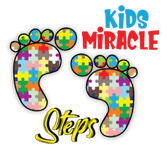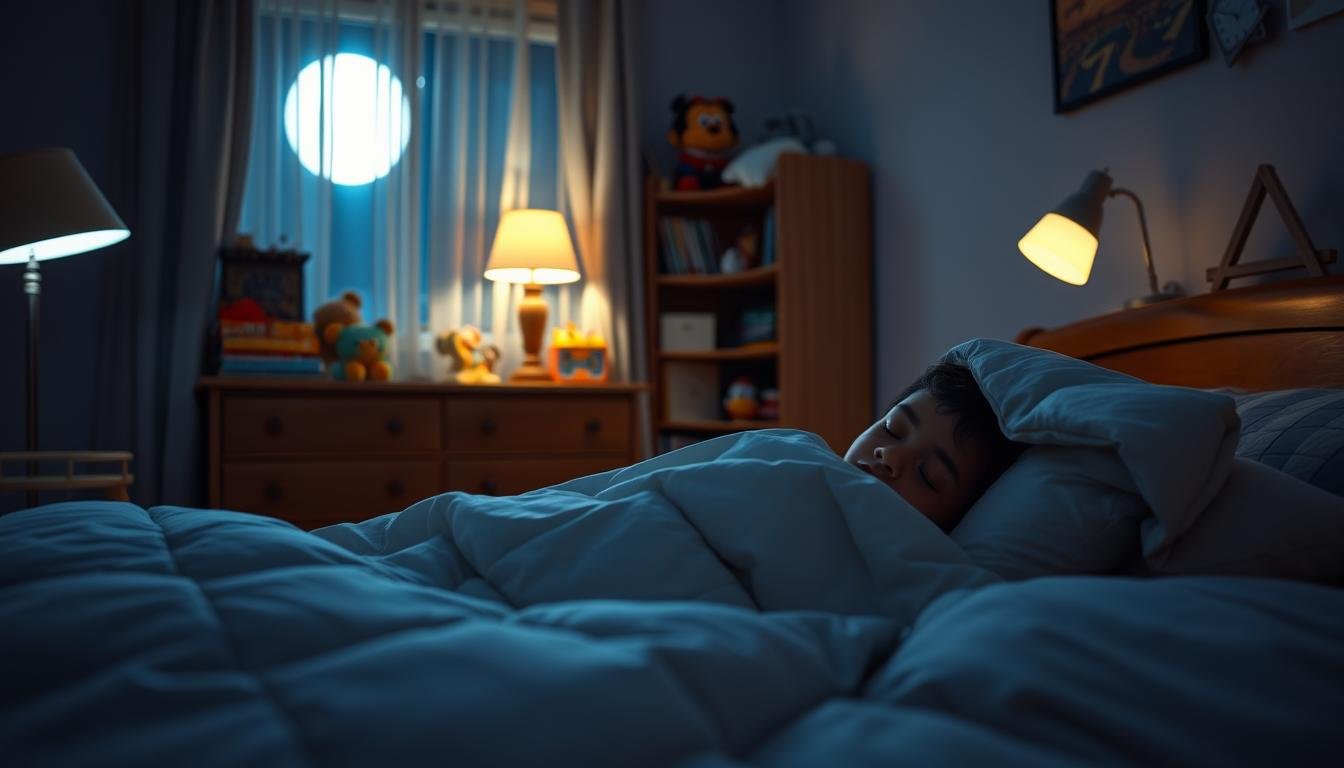Do you wonder why homework is so hard for your child with ADHD? You’re not alone. Studies show kids with ADHD are 2 to 3 times more likely to struggle with homework. It’s clear why this time can lead to stress in many families.
We want to make homework better for you and your child. By learning what your child needs, making a good homework space, and setting up a solid routine, homework can become less stressful. Here are seven tips to help you and your child manage ADHD at home easier.
Schools often lack the right support for kids with ADHD. Our goal is to give you strategies to boost your child’s confidence and focus. Let’s explore these tips together, offering tools and advice for smoother homework times.
Understand Your Child’s Needs
It’s crucial to understand the unique challenges faced by children with ADHD. This involves identifying and supporting their specific needs. By noticing how your child acts and listening to them, you can tailor ADHD strategies to help them.
Many kids with ADHD find it hard to start and finish tasks. Breaking big tasks into smaller parts can make things easier. This method turns a scary task into something they can achieve. Getting bored can also be a big problem. It’s good to talk with their teachers about different ways to learn. For example, using your child’s interests in their homework can make learning fun.
Creating a reliable yet flexible homework routine is also a smart move. According to the National Association of School Psychologists (NASP), clear routines can make homework easier. Try to have homework time at the same part of the day, considering what works best for your child. Letting your child have a say in their schedule can make them feel more in control. Making a Daily Homework Planner helps with this. It improves their organization skills and helps them own their work.
It’s also key to remember the value of taking breaks. Studies show that short breaks can help kids focus better. Some kids may need a break every 15 minutes, while others do better with longer breaks. By using these strategies, we support our children’s learning journey, helping them do well despite ADHD’s challenges.
Create a Homework-Friendly Environment
Creating an ADHD-friendly study space is essential for kids with ADHD. It helps a lot to have a special spot meant just for studying. Ensure the area is silent and cozy to start with. Using quality sound-canceling headphones helps in loud places, keeping distractions low. Also, the right lighting prevents eye tiredness and keeps your child alert.
Let your child help set up their study spot. This makes them feel more in control and responsible. Make sure everything they need is easy to get to. This reduces mess and helps them focus better.
Introduce a color-coding system (green, yellow, red) for tracking homework progress. It’s a good way for your child to show how they’re doing. Visual timers are also great for teaching them how to manage their time. Sometimes, a change of scenery, like going to the library, can help them be more productive.
Lastly, mix homework with fun activities, a trick called “temptation bundling”. By thoughtfully setting up a study space with these ideas, we help our kids do well in school. They stay on task and feel encouraged.
Encourage Physical Activity
Understanding the physical activity benefits is key for your child’s focus and well-being. Kids with ADHD often find it hard to concentrate on homework. Yet, active learning techniques can really help.

Moving around boosts concentration and prepares the brain for learning. Kids should be active for 60 minutes a day, but only about 25% do it. Being active not just helps physically but also sharpens focus in children with ADHD. Short movement breaks during homework can refresh their minds, keeping them focused and alert.
- Walking while reading aloud
- Bouncing on a trampoline while reciting multiplication tables
- Engaging in educational physical games
Active learning makes studying fun. It helps with memory and understanding. Besides, it supports emotional and social growth. Kids who exercise sleep better, feel less stressed, and do better at school.
Parents should lead by example in being active. When children see their parents moving, they’re more likely to join in. This helps them start healthy habits early, encouraging a life full of activity and well-being.
| Category | Percent/Recommendation |
|---|---|
| Children meeting 60 minutes of activity | 25% |
| Daily screen time recommendation | 1-2 hours per day |
| Sixty minutes of activity benefit | Improved focus, reduced anxiety |
Adding physical activity to daily routines, especially during homework, boosts concentration and school success. These methods use the physical activity benefits and new active learning techniques for better ADHD focus improvement.
Implement a Structured Routine
We often talk about how good a structured routine is, especially for kids with ADHD. It all starts with knowing how important predictability is in everyday life. Kids can handle their days better with less worry when they know what to expect. This steady routine helps them stay focused and get more done during study time.
Setting up schedules for ADHD means picking certain times for study, breaks, and chill time. Using the Pomodoro technique, which is 25 minutes of work plus a 5-minute break, can make kids 25% more productive. This keeps kids focused without feeling too stressed.
Studies show that many kids with ADHD find it hard to stay organized and finish tasks. A regular daily routine can help tackle these issues. For example, a special spot for homework can help kids finish 40% more tasks. Having visual reminders can boost this by 20%, and breaking tasks into smaller steps can double their efficiency. These tactics together make a supportive setup for kids to succeed.
Routines also make life less stressful for both kids and parents. About half of the kids with ADHD feel a lot of stress from homework, but a solid routine can help lessen this. Families that get involved in a homework routine together see a big drop in arguments, up to 60%. Tools like planners or apps can also help kids finish 25% more of their tasks.
In the end, routines help more than just with homework. They can improve overall grades by 30%. These plans are good for the whole family, making evenings more predictable, cooperative, and calm.
Use Rewards and Positive Reinforcement
Positive reinforcement works great to help kids with ADHD stay motivated. It’s based on B.F. Skinner’s ideas from the 1930s. He found that rewards right after a good behavior make kids link their action with the reward. This technique is really powerful for kids with ADHD.
Rewards can be different things. For example, getting stickers or toys can really help, especially when school starts. Studies show rewards can make kids want to finish tasks 75% more, using things like reward charts at home.
Privilege-based rewards are also very helpful. Letting kids pick activities or earn special privileges makes them feel valued. Giving specific compliments works better than general ones. This approach can make participation and cooperation in class go up by 50%.
Using these methods right away and often can really improve how well kids keep up good behaviors and succeed in school. If you keep up with positive feedback, kids can learn new things 60% faster. But, it’s important to mix in rewards that make kids feel good on the inside, too. If we only give out things, it might make them less motivated on their own by half.
Having rewards for groups can make everyone work better together. Teachers say this can increase good behavior in the whole class by 30%. Using rewards smartly not only helps kids with ADHD but also makes the classroom better for everyone.
Tips to Make Homework Manageable
Managing ADHD homework can be quite the challenge. However, it’s totally doable with a few smart steps. Start by breaking assignments into smaller pieces. This makes tasks less daunting and helps the child focus, which boosts concentration and results.
Using visual tools like calendars and color-coded materials helps with ADHD homework. They assist in organizing and deciding which tasks are most important. It makes it simpler for your child to know their tasks and their deadlines. Incorporating tech is another key tactic. Apps for reminders and organizing tasks can simplify homework into easier parts. This keeps your child on track and ensures they don’t miss anything.
Keeping in touch with teachers is also vital for effective ADHD homework tips. Custom homework that meets your child’s learning needs can greatly help. Teachers can offer more help and adjustments that specifically benefit your child.
Lastly, think about using a reward system for finished tasks. This method boosts motivation and builds positive feelings about homework. Rewards could be anything from more playtime to little treats. They create a feeling of achievement and motivate constant hard work.
| Strategy | Benefit |
|---|---|
| Breaking down assignments | Reduces overwhelm and improves focus |
| Visual organizing tools | Aids planning and task prioritization |
| Incorporating technology | Ensures tasks are tracked and managed |
| Open communication with teachers | Customizes homework to suit child’s learning pace |
| Reward system | Motivates and fosters positive task associations |
Conclusion
Using ADHD support techniques makes homework better for your child. Kids with ADHD might need 2-3 times longer to finish homework. About half face difficulties with focusing and staying organized.
Structured schedules, exercise breaks, and rewards can help finish tasks and improve focus by 30%. Our goal is to help kids become independent learners. Physical activities can boost focus and memory by 20-25%. Hands-on tasks can make understanding increase by 40%.
Using these strategies helps kids learn skills for the future. They lead to better grades and easier homework times.
For more help, reach out to professionals like those at Kids Miracle Steps. They offer customized support for your child’s unique needs. Our resources for parents with ADHD kids aim to guide you successfully. Working together, we can enhance your child’s learning experience.






